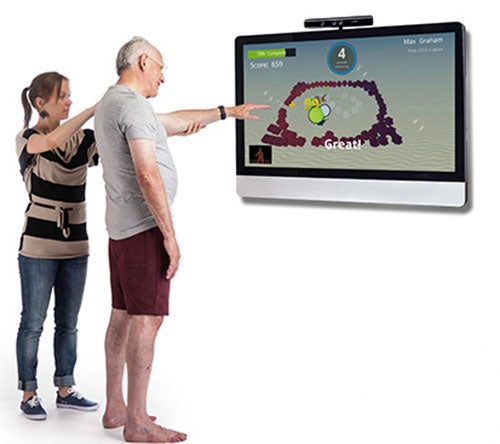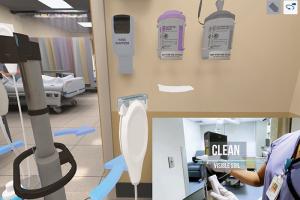Tech talk: Specialty providers turning to telehealth to increase access to care

The interactive system provides patients the flexibility to complete rehabilitation at home or in a physical therapy facility.
Rehab patients can heal at home using interactive program
A program being developed by the New Jewish Home in Manhattan's Upper West Side in New York City is helping patients to rehabilitate at home. A video game console-like system outfitted with a Microsoft Kinect camera that monitors 25 points on a person's body tracks patient movements and relays the data back to the health care team who can remotely assess progress and adjust programs as necessary.
The program is called Jintronix and is part of the emerging health field of telerehabilitation. It engages patients in therapy exercise during regular one-on-one therapy sessions, through gamified exercises to improve care coordination in a motivating and cost-effective way.
In the coming year, the New Jewish Home is hoping to discharge some 30 patients with this equipment as part of a pilot program to provide occupational and physical therapy at home.
Jintronix co-founder and CEO Mark Evin told the New Hampshire Union Leader that the at-home program is being used with great success in rural and remote areas.
Neurologist aims to simplify care for patients with Parkinson's
A neurologist is pioneering the use of teleneurology to help individuals with Parkinson’s disease, according to Hospitals & Health Networks. Ray Dorsey, M.D., director of the Center for Human Experimental Therapeutics at University of Rochester Medical Center, has been using telehealth to provide routine access to specialty care for patients in their homes or a nurse-managed Parkinson’s clinic. He uses a HIPAA-compliant technology similar to Skype and says these days he almost exclusively “visits” with patients via the internet.
Dorsey says patients from 80 countries and all 50 states have visited its site to learn more about getting care for Parkinson’s disease in their homes. He is leading a multicenter national, randomized, comparative-effectiveness study comparing usual care in the community to usual care plus four teleneurology visits a year with a Parkinson’s disease specialist.
GE uses remote technology to provide training on medical equipment
GE Healthcare is using telehealth technology to train radiologists remotely. The company partnered with InTouch Health to help train imaging techs and radiologists to use high-tech imaging devices. The pilot connected GE experts to health care providers in more than 200 telepresence classes around the world, successfully training more than 300 medical professionals.
InTouch Health’s Virtual Onsite Training device replicates face-to-face training through an attached video monitor and robotics for two-way communication and interaction. GE says the program is more convenient and more effective than traditional training alone.
“GE Healthcare provides technology to providers and patients around the world. The users who operate those devices are as impactful, if not more so, on the actual efficiency and patient outcomes as the product itself. Therefore, GE has made it a global priority to reimagine its training and education solutions to help users achieve and maintain optimal skills and product usage,” says Mario Lois, general manager, GE Healthcare's global education services division.




